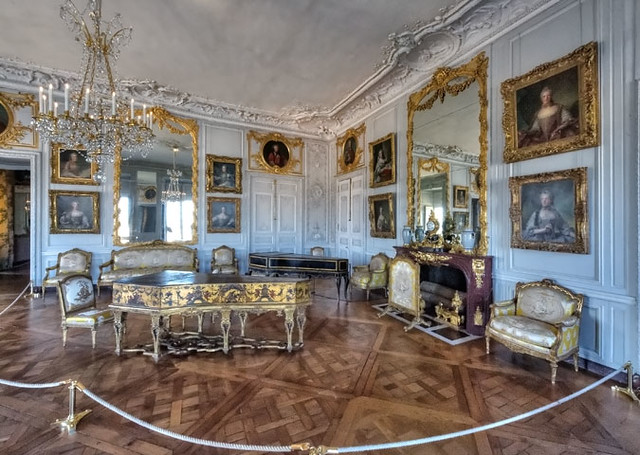When the Duke d'Anjou was proclaimed to be the next King of Spain he stayed in this room with his new rank - he would occupy the salon for a couple of weeks.
Once again the god that inspired the name of the salon also inspired the decoration. The ceiling is adorned with a large painting of Mercury in his chariot painted by Jean-Baptiste de Champaigne. Besides this main painting there are four other paintings in the ceiling moulds; these include several figures from the Antiquity such as Aristotle, Alexander and Augustus. A large clock is on display in the room. It was offered to Louis XIV by its maker Antoine Morand in 1706. One can see through the clock mechanism and the clock is adorned with a miniature figure of Louis XIV crowned by victory. The bed that is now at display in the Mercury salon is the one that Louis-Philippe placed there when he transformed Versailles from a royal residence to a museum.
The remaining furniture in the room has been recreated after the Versailles inventory list since the original furniture was lost during the Revolution.








